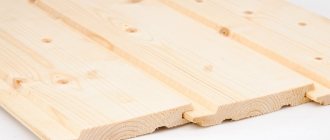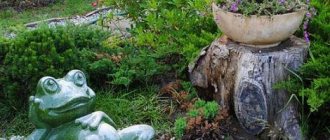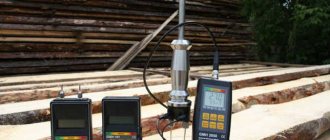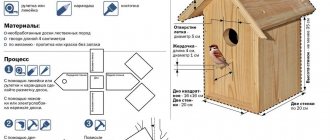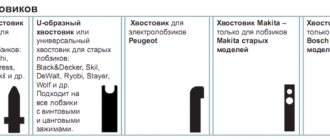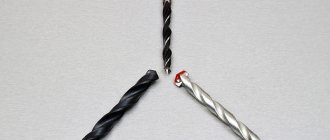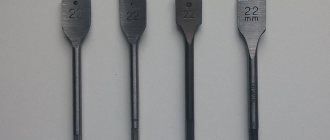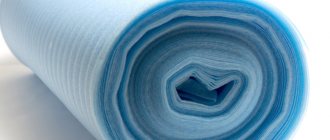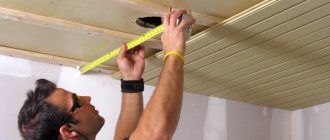Natural materials in construction and interior decoration are at the peak of popularity. And the types of natural materials are increasing exponentially. In addition to the fact that natural materials are becoming increasingly popular, the popularity of classic interiors is growing along with it. Antique, classic, retro notes in interiors do not give up their positions in interior design. Brushed lining acts as a creation of a special atmosphere of antiquity in the interior.
Finishing with brushed clapboard adds a touch of charm, charm and sophistication to the interior. As a matter of fact, due to the fact that natural, “antique” interiors are in demand among the population, manufacturers came up with such a type of finishing material as brushed lining. And this type of finishing material appeared relatively recently.
Installation of lining
Preparation stage
Cutting lining
- Before starting work, it is necessary to calculate all surface areas where the lining is planned to be laid.
- Next, you should purchase the number of boards that is required according to calculations. Be sure to add a small amount to this amount in the amount of ten percent of the total.
- When choosing planks, it is advisable to choose their length so that possible cuts are minimal, this will save money.
- If we are talking about the interior decoration of residential premises, then you will need spruce or pine lining, its width can be from 80 to 110 cm, and its thickness in the range of 12-16 mm.
- The humidity of the lining should not exceed 12%, since during shrinkage and drying, cracks may form, as a result of which the boards themselves will diverge in the future.
Installing the lining will not cause any difficulties.
The next step is to determine the option for laying the lining. If we are talking about covering a small room with a high ceiling, then the material should be laid horizontally. If the walls are too high, vertical masonry should be used to simplify the task and save material. Sometimes a herringbone installation method is used, but it is most often used when decorating exterior walls.
An important stage is the preparation of the lining itself, which must be unpacked and laid in the room where it is planned to be laid, so that the material undergoes so-called acclimatization and is not subject to further deformation.
Installation of sheathing
Before you start decorating the sheathing frame, you should level the walls as much as possible. For example, if a surface made of unrounded logs is used as a basis for laying the frame, the protruding parts of the logs must be cut down with an ax and then leveled with a plane.
Installation of sheathing
Having completed the preparation, you should begin installing the sheathing. The technology most often used is to lay the lining in a vertical position, and we will consider it when starting to carry out the sheathing.
- The lower beam is installed at the floor level, and the upper beam at the ceiling level.
- The evenness of their installation can be checked using a level or plumb line.
- The laces should be pulled between the beams at the corners, and then one more is added to them in increments of 1.5 meters.
- The bars should be fastened at a distance of 90-100 cm between them using self-tapping screws. If there are irregularities on the wall, you should level the sheathing in one plane using pads under the bars. But the use of self-tapping screws is mandatory.
Installing lining on the wall
Plank by plank - it's easy!
The lining should be laid from the corner of the room, and the most careful attention should be paid to installing the first plank, leveling its verticality, and also attaching it to the base bars. It must be installed in a corner with a comb, the groove will always go on the open side, the finishing nails are driven into it. In addition, it is possible to install a clamp on the groove side, if this is planned
Accordingly, the next lining with its ridge will overlap the attachment point of the previous one (photo). Each lining at the top and bottom is attached closer to the edge, this will then allow you to hide part of it with baseboards or ceiling cornices. If one of the boards does not lie entirely in the corner part of the room, the excess part should be cut down along its entire length using a jigsaw. When installing the material, you should take into account the possible shrinkage of the house and changes in the size of the boards in the event of changes in humidity levels. It is advisable to leave a small gap between the upper and lower levels of the room, which will later be closed with baseboards.
Using lining for doorways and windows
The most difficult moment in the work of cladding a room is the design of door and window openings. If, during the process of laying the lining near a door slope or window opening, the lining protrudes beyond it, you should cut off the excess with a jigsaw, having previously measured it with a pencil. During the finishing process, the slopes can be decorated with corners made of plastic and wood.
Mistakes when installing lining that should not be made
1. No gaps between panels
The facade is constantly exposed to aggressive environmental influences. Therefore, the geometric dimensions of the panels will constantly change: increase when wet and decrease when dry. In order to compensate for these movements, gaps of 1-2 mm are required. Therefore, when installing the lining, they are matched to each other, taking into account this requirement.
Video - Installation of lining with an error
2. Lack of moisture and bioprotection
The panels must be prepared for installation on the facade: covered with an antiseptic and moisture-proof composition.
Antiseptic for wood
3. Panel distortion
In order to avoid this trouble, the correct installation of each panel is checked with a level. The lining must lie strictly horizontal.
If you follow all the rules and know the nuances of the work, covering the facade with brushed clapboard will not cause any difficulties, and the quality of installation will be impeccable.
Processing methods
Manual processing method
The highest surface class can be achieved by manual brushing. A brush is used for this. The brush is used to remove fibers layer by layer.
It is important to note that booking without automation of the process makes it possible to achieve a higher class
Periodically, after removing each layer, firing can be carried out. Firing allows you to change the structure and change the color of the base. The brush is selected taking into account the type of solid wood.
It is advisable to use the manual method of removing fibers when creating decoupage. Decoupage is a special decoration method that allows you to create beautiful things by hand. In this case, decoupage is coated with oil or varnish to give a special effect. The surface is often fired to achieve a unique result.
The manual method is rarely used to produce floor boards. Only expensive, high-end floor boards are made by firing and manually removing the fibers.
Mechanized processing
Decoupage can only be obtained by manual processing, but in other cases an angle grinder is used. This is due to the fact that decoupage requires painstaking work, and angle grinders are used only for large amounts of work.
Features of using an angle grinder include:
- a tool called an angle grinder - an angle grinder, which is rarely used when creating decoupage, but has become widespread in mass production;
- The angle grinder has replaceable attachments that can be selected according to the type of wood. They can be changed quickly;
- As a rule, an angle grinder operates from a household voltage network. There are versions that can be powered from a built-in power supply;
- in some cases, an angle grinder is used to perform the primary stage of surface aging. After this, manual removal of the layers can be carried out. Therefore, in some cases, materials for decoupage are also initially processed by an angle grinder;
- the tool allows you to significantly speed up the process, which reduces the cost of its implementation;
- The quality of the result obtained is somewhat lower, but often it is sufficient.
Mechanization also makes it possible to fire or coat the surface with oil. The surface should be coated with oil or varnish because the fibers are very susceptible to temperature or humidity changes. Firing provides less protection to the structure. Often firing is a preliminary step before coating the surface of a nylon or other base. You can change the appearance by using a paint and varnish product.
Tags: Sanding wood
DIY brushed lining
If desired, you can brush the finished board at home. This will reduce the cost of purchasing aged material, which always has a higher price in hardware stores.
Mechanical brushing
For work, you should select boards with the desired pattern. It will be easiest to brush spruce or pine lining, but cedar and larch, due to their high density, are quite difficult to process manually. You also need to purchase a brush with metal hairs, which can remove soft fibers and leave deep enough grooves. For a large amount of work, it is better to buy a grinding machine with an appropriate brush attachment or a drill with a special abrasive ball.
You will also need:
- sandpaper;
- impregnation for wood protection;
- paint brush;
- rag.
After sweeping the dust from the lining, you need to lay the boards on a workbench or regular table and secure them so that they are motionless. The lamellas are treated with a brush, pressing evenly on them and making grooves 2-3 mm deep. The ends are worked out more carefully.
To obtain wide and deep stripes, use a grinder with a stone disc. Then the sawdust is brushed off again and the wood is sanded with sandpaper to level and remove small fibers. Next, grinding is done with a nylon brush, and manual processing gives a more effective result.
At the end of the work, the lining is covered with glazing impregnation, which adds decorativeness and protects the material from the influence of negative factors. To make the texture bright and attractive, you need to apply a transparent moisture-resistant varnish or wax-based stain to the material. If it is necessary to provide a more interesting shade, impregnation oil with a color dissolved in it is applied to the lining.
Technique with fire
A less labor-intensive aging method is wood firing. It is a unique type of brushing and involves the use of a gas torch or blowtorch. The disadvantages of the technique are the danger of execution and the scarcity of finished lining in color.
The first brushing method
Materials and equipment you will need:
- board;
- wax;
- rags;
- fine-grain sandpaper;
- gas-burner;
- gas cylinder.
The work is carried out outdoors or in a spacious utility room. The burner flame is driven along the fibers, creating the pattern that is required. Afterwards, the boards are sanded, covered with a layer of wax and polished with a rag.
Second brushing method
This technology will require a grinding machine with a brush attachment for brushing, as well as a blowtorch. Fire burns through the wood to a depth of 1-2 mm so that the surface becomes almost black. Then they remove the top layer with a machine, achieving the desired line pattern, sand the base with sandpaper and tint and varnish.
Oil processing technique for lining
The brushed board is coated with oil to enhance the contrast of the pattern. Choose special protective synthetic oils for outdoor use. The procedure will be as follows:
- open a jar of oil, mix the liquid well with a narrow spatula (do not stir, as many bubbles will appear in the oil);
- make dry strokes on the wood, taking a minimal amount of oil onto the brush;
- rub the liquid over the surface, achieving complete absorption;
- dry the lining for 5 hours;
- sand the material with sandpaper No. 150;
- remove dust from the base with a clean paint brush;
- cover the lining with a protective composition.
Technique for obtaining the “old paint” effect
To perform this technique, you need to buy black oil of the Lobasol brand, as well as any colored oil (you can use OSMO 2708). You will also need:
- paint brush;
- rags;
- rubber spatula.
Black oil is applied to the lining with a spatula in a thick layer, after 15 minutes the excess is removed with a lint-free cloth. Use a similar cloth to polish the base. A day later, apply colored oil in a second layer. After 10 minutes, apply pressure to the wood with a rubber spatula, removing unabsorbed residues. In another day, the lining will be ready for application of the protective bio-composition.
What sizes does a brushed board come in?
Today, in construction stores you can purchase both regular boards with an aging effect and euro material, which has a completely similar surface.
The board is made according to certain standards: European or Russian. European material is made of higher quality, in accordance with all necessary standards, than Russian material.
It is very important for the lining to have exact dimensions; due to the optimal footage, it will not dry out and will not be susceptible to cracks. Therefore, when choosing a material for cladding, it is worth paying attention to the fact that one of the important parameters should be compliance with all necessary standards - the material is the same in all dimensions.
Standards and sizes of European and domestic lining:
| Parameter | Standard in mm | Euro in mm |
| Spike height | 5 | 8 |
| Product thickness | 12 — 40 | 12, 5 |
| Length | 0.2 - 6 m | 0.4 - 6 m |
| Width | 76 — 200 | 80, 100, 110, 120, 140 |
Also, do not forget that there are deviation standards that the manufacturer always declares:
The width deviation may be 1 mm;
- Length – 5 mm;
- Spike height – 0.5 mm;
- Thickness – 0.7.
Deviations should not exceed these indicators. If they are significant, then such material is not worth purchasing. Most likely, this is a defect, which will naturally affect the quality of the room’s cladding.
How to paint lining inside a house: ideas
Painting techniques and methods are great, but how to fit lining into a modern interior? Just. There are many interesting options. The designers' latest finds are a clapboard wall in a room with smooth walls. It looks creative and interesting. And most often such a wall is made using the brushing technique.
One of the options for using lining in the bedroom interior
An interesting effect is achieved by combining fittings of different thicknesses - in the photo, thin ones are inserted between wide boards. Moreover, they are painted in different shades of the same color. The combination turns out interesting and fresh.
Lining is also used to create interiors in a modern style.
Lining is not necessarily just a flat board with small grooves on one side, which is also called eurolining. There are different profiles, including those with waves and troughs. From them you can assemble interesting walls, the relief of which is emphasized by painting.
You can assemble interesting reliefs from linings of different profiles. To make it look more interesting, highlight the reliefs or whiten them
As usual, in the interior, a lot depends on the light. Several non-standardly designed lamps - long translucent strips behind which lamps are hidden, installed in the middle of the ceiling - and the interior is completely transformed. This design can be used to decorate rooms for young people, creative living rooms, etc.
Very interesting solution with lighting
You can play not only with light, but also with color: in the lighting zone, paint the lining in a lighter color, thus emphasizing this zone.
Play of light and color reflected in the mirror
If you have good drawing skills, you can paint the lining. Just don’t forget to then cover the entire painting with colorless oil or varnish to preserve it longer. This technique can be used when decorating a children's room.
Painting on lining
Rigidly defined lining panels look great in the interior of an office, living room, or hallway. In the same vein, you can decorate the wall in the dining area in the kitchen. Only its quality and coloring must be perfect.
The honey shade of the lining is repeated on the ceiling
Treatment for a rustic-style interior can be deliberately imperfect. These are rooms with a masculine character.
The rustic style will appeal to men. In this case, painting the lining using the brushing technique is the norm. Moreover, the colors are chosen dark
As if in contrast - light walls. The lining is whitewashed and the beams are painted dark. Despite the traditional materials used for centuries, the look of such a room is modern and stylish.
An excellent combination is light walls with the effect of bleached oak and dark massive beams. It's practically a win-win option.
Variation on the same theme
Lining is also used in the decoration of bathrooms. Impregnation here needs to be given maximum attention, but if the ventilation in the bathroom is at the level and the impregnation is protected from moisture, then there should be no problems. And the interior, you see, is very interesting - warm wood tones combined with bright marble are a great move.
Lining in the bathroom
Lining is also used for finishing balconies. You just need to fill it horizontally - this way you can expand the small space. And light colors look better in such a small area, maybe with a dark edging.
Whitewashed paneling on the balcony
Ceiling - lining, painted with light stain
Some features and recommendations
When working, it is important to use only high-quality tools. It will allow you to achieve the maximum effect of antiquity. You should not abuse innovations. Every design decision has the right to exist. This also applies to the antique painting process. It is not necessary to use such techniques only in this form. You can achieve other effects appearing on the wall. Antiquity is simply one of the varieties and possibilities that do not necessarily have to be applied. Exactly the same movements on the paint can be used to create other drawings. This is a creative process that should help people realize what they are capable of.
Every person is capable of much. There is no doubt about it. If you create the effect of antiquity in your home with your own hands, then you can safely say that a person has learned to create. This is only a small part of the abilities that he can demonstrate at various stages of his development.
When the work is completely finished, you can decorate the wall with some decorative elements. These can be massive paintings, which will further enhance the effect of antiquity. An excellent solution for most modern apartments.
Based on materials from the site: https://moyagostinaya.ru
Advantages
The positive features of such raw materials include a number of its unique properties, determined by the specific conditions in which the tree grows.
The presence of gum in the raw material enriches the wood and gives it special properties.
- Resistant to rotting and harmful effects of microorganisms. Biostability is the highest indicator compared to other types of wood used in production.
- For most insects, gum is dangerous, so they do not harm the wood. That is why the products do not require mandatory chemical treatment against pests, which is a necessity for many other materials.
- The material is not subject to deformation due to exposure to moisture, which allows the use of larch when arranging saunas and baths. Moreover, larch is the only wood that does not lose its qualities in water, but, on the contrary, becomes even stronger.
- It has been proven that the vapors that wood emits during its operation have a beneficial effect on human health - they increase immunity, reducing the risk of frequent colds. Phytoncides also saturate the indoor microclimate with antiseptic properties and a pleasant subtle aroma.
In addition to the features that are inherent in larch due to its composition, the material has a lot of other advantages.
- A high level of strength of products, which consists of the following data: tension and compression, bending along wood fibers, hardness and other characteristics. It is in these indicators that it differs significantly from pine and cedar, since in terms of the above characteristics it is very similar to oak wood, which is the most durable material.
- Excellent level of fire resistance, which is twice as high as the fire resistance of pine.
- The attractive appearance of wood even in comparison with maple or beech, which is expressed in an excellent overview of the layers of wood when making a cross cut. Thanks to this feature, larch floorboards are visually very similar to Canadian oak. Also, larch does not turn blue over time.
- Long service life of products.
- High thermal insulation properties, which allows the lining to provide coolness in hot periods and retain heat in winter.
- The color range of the material has a lot of different options, making it very easy to choose the desired shade for exterior or interior work. The palette includes 12 colors, which range from light shades of gold to red-brown.
- The age of wood only increases the positive qualities of the raw material, and the natural color pleases with its nobility, due to which there is no urgent need to correct it with the help of coloring compounds.
You can preserve the natural shade of larch lining by treating the products with special oils or wood wax, and you can set the desired tone with varnish-based coloring compounds.
Characteristics of larch
To build a country house from timber in the European part of Russia, oak or linden wood is often used. These materials are very common, but have certain disadvantages:
- Linden and oak fade over time;
- Under unfavorable conditions, the trunk of linden, cedar and some other species begins to rot. Therefore, they are not used as covering walls and floors in a steam room, shower, garage, etc.;
- The shrinkage of these species is uneven, i.e., after the season, some boards may be thicker, some thinner;
- Linden does not tolerate severe frosts and is extremely unstable to moisture and wind.
Photo - a room made of larch
Therefore, brushed lining made of natural Siberian larch is increasingly used for the construction of houses and decoration of rooms. Larch comes in the following types:
- Daurskaya;
- European;
- Primorskaya;
- Siberian.
Daurian larch grows in Kamchatka; its boards are ideal for decorating apartment rooms, as they crack when exposed to moisture and sunlight. Insensitive to temperature changes, does not fade.
Photo - example of Daurian lining
European or deciduous larch has excellent longevity. It does not bend or break, and can even withstand torsional loads. Its wood is quite hard and rough, but lends itself well to processing. This type of larch is often used to produce various lumber: lining, chips, decorations, etc. The key difference from many other species is the ability of wood to retain its properties even when in water or land, which is why it is used for finishing basements, building boats and ships.
Photo – European
The variety of Siberian larch, which is often used for the production of lining, has the best characteristics of all the listed models. It is wide and durable, withstands temperature changes (the minimum minus for this breed is -50 degrees, and plus - +60). The wood does not crack even at high humidity. The main feature of this breed is that over time the board acquires a noble, deep shade. Most of the temples, which are more than 400 years old, were built from Siberian larch.
Photo - Siberian
Primorsky larch lends itself very well to various types of processing. It is soft but durable, so it is often used as a material for covering floors and walls. It has a low drying threshold, does not fade and is not susceptible to the harmful effects of moisture.
Photo – Primorskaya
The characteristics of larch are determined by the compression of the wood and its reaction to a certain level of humidity:
| Breed | Density at 15% humidity, g/cm3 | Sapwood color | Ultimate compressive strength across the fibers, MPa | Static bending strength, MPa |
| Daurskaya | 0,65 | Brown | 641*105 | 1189 |
| Primorskaya | 0,53 | White, white-pink | 4,5 | 69 |
| Siberian | 0,6 | Red-brown | 650*105 | 1095,36* 104 |
| European | 0,59 | Yellow | 600*105 | 1100 |
Photo - house made of Siberian wood
Types of brushed lining
Depending on the type of wood, it is divided into 4 basic groups:
- Extra class;
- class A;
- class B;
- class C.
Category Extra. It is also called Premium or “zero”, implying the ideal flawlessness of the board. It should not contain any mechanical defects or natural defects in the form of cracks, knots, sapwood, chips, debarking residues, etc.
Category A. Such products also do not contain a core, but they are allowed to have one live knot for every 1.5 m of length. In addition, there may be 2 resin pockets and the same number of cracks - small, not through.
Category B. This lining may have up to 4 knots inclusive for every linear 1.5 m, 2 blind cracks and resin pockets. Plus, the presence of 1 spot of a contrasting tone and minor damage received during processing are taken into account.
Category C. Some people include open marriage here, which is absolutely unacceptable. According to GOST, such lumber may contain 1 spot of contrasting color, mechanical defects, stripes, blue stains, resin bags, cracks (not through), up to 2 falling knots inclusive.
Brushed lining close-up
Do-it-yourself wood brushing: artificial aging of wood
Parquet with the effect of aged wood looks very beautiful
This wood structuring technology is suitable for use with soft and hard woods that have a clearly defined texture and obvious layers of different hardness:
- pine
- oak
- larch
- ash
- nut
- wenge
Brushed table in a rustic living room interior
Beautiful spread of brushed wood
Loft-style living room combined with an office
Wood species with a fine-grained and indistinct structure are unsuitable for brushing, since they do not have the necessary layering. These types of materials include wood:
- beech
- maple
- alders
- teak
- birch trees
- cherries
Stylish kitchen apron made of brushed wood
Brushing will add uniqueness to your furniture
The use of brushing technology allows you to create original textures that look ideal in products for interiors of different styles. Structured wood is actively used in the manufacture of floors, furniture, and decorative elements. Natural wood fits perfectly into any design, adding original touches to it.
Where is the board used?
Brushed lining fits well into any interior. It looks great in a classic style, and is also used in country, Provence, vintage and retro. Perfect for covering cabinets, living rooms, dining rooms, terraces, balconies, loggias, etc.
The lining material gives the room a good imitation of antiquity, which makes it more cozy and comfortable. It is often used to decorate a summer house or any other residential premises.
Pros and cons of larch cladding
The Shtil lining has individual features that distinguish the product from a huge variety:
- the joints between the panels are minimal, practically invisible;
- cladding can be combined with other finishing materials, creating stylish and fashionable interiors;
- original and attractive appearance;
- environmentally friendly, natural material;
- simple and convenient installation;
- the relevance of the finishing is maintained from season to season;
- on the inside of the panels there are special recesses that promote optimal ventilation and also drainage of condensate;
- wide panels allow you to decorate rooms with a minimum number of seams between elements;
- "Calm" provides many options for decorating rooms with a non-standard layout;
- smooth surface, without grooves or depressions.
Buyers highlight only one indicator as a disadvantage - cost. Natural finishing is not affordable for everyone, but given the above advantages, the cost is quite justified.
How to choose quality material
It is worth considering several recommendations that will help you choose high-quality and reliable material for cladding any room:
- When purchasing brushed lining, you should pay attention to the condition it is in. If the texture is curved or slightly twisted, then it will be quite difficult to make a high-quality cladding of the room with its help;
- It is worth paying attention to the integrity of the packaging material in which the product is located. If the board was not hermetically sealed, then most likely it could absorb unwanted moisture. Unfortunately, this results in poor quality material;
- One of the best in quality and durability is the material made from alder wood. It will not lose its density over time and will delight a person with its original appearance.
What kind of wood should you use for brushing?
Not every wood is capable of conveying the originality and beauty of this type of decor such as brushing. Species with soft wood or those with medium hardness are excellent for processing, for example, ash, walnut, oak, larch. Also, when selecting a material, the structure of the tree is important - its structure should be clearly expressed, with clearly visible fibers.
This is explained by the fact that in brushing, the effect of wiping soft fibers is important, in which hard fibers become brighter and more contrasting. Accordingly, with a uniform structure, the appearance of artificial “aging” of the wood will be zero.
It is worth noting that the brushing technology itself does not perform the “aging” function. The stage of painting the wood is extremely important in the process, without which the work will have an unfinished and unaesthetic appearance.
Summarizing the above
Similar methods of aging wood can be applied not only to lining, but also to any other surface that is made of wood. Stain is actively used in cases where it is necessary to age, for example, a wooden door or to give a unique shade to a window opening.
As for other aging methods, they are also widely used in practice. They are mainly used to treat furniture to give it an antique effect. However, lining can also be aged by one of them, because it is also an ordinary tree.
https://vsyavagonka.ru/youtu.be/HVDFkEZOcm4
You should always remember that all work carried out to age the surface of wooden products must be carried out carefully, since the result may not be exactly the expected effect.
Features of brushed lining
The choice of lining type depends on the user’s needs, specific operating conditions and financial capabilities.
Types and sizes
Brushed lining has different textures, colors, patterns and differs in size, presence or absence of chamfer. According to the type of connections, the material can be classified into:
- softline;
- landhouse;
- eurolining;
- calm;
- block house;
- American;
- double-sided lining.
Depending on the type and quality of wood, the material is divided into four classes:
- "Extra". This is a premium quality knot-free lining with a flawlessly smooth surface. The presence of even small cracks, unplaned areas, and wood defects is excluded.
- Class A. High quality material that does not include cores. There are knots on the surface no more often than one per 1.5 meters of board length. The presence of small pockets and end cracks (up to 2 pieces) is allowed. For lining made of coniferous wood, a tar content of no more than 10% is allowed.
- Class B. The boards can have up to 4 knots for every 1.5 meters of length, 2-3 cracks or resin pockets. The formation of minor cracks during wood processing is not prohibited; there may be places affected by insects (no more than 5%).
- Class C. There are practically no restrictions on the parameters; holes from knots, cracks, resin pockets, areas of non-compliance with the overall color are acceptable; there should only be no obvious rot.
Another important parameter of the lining is its size (length, thickness, width). The material is available in different widths, while the length of the boards has increments of 10 cm. The optimal thickness of the lining for interior decoration is 12.5 mm, for exterior work - 15-20 mm.
Thick lamellas can easily withstand both their own weight and the mass of insulation materials. The wider the material, the higher the likelihood of its deformation due to changes in temperature and humidity. Narrow boards have better resistance to physical and mechanical stress.
Brushed lining can be solid or spliced, when pieces of wood measuring 15-75 cm are joined into one board. The joining is done using a special microspike, additionally coated with glue and fixed under pressure. Finger-joined lamellas are always quite thick (from 15 mm), therefore more expensive and heavier
When purchasing, it is important to find out what type of glue was used: toxic substances are strictly prohibited for use in interior decoration
What is the material made from?
Many types of wood are suitable for brushing
It is important that the material has a beautiful texture and its surface is pliable for processing. The best material for brushing is lining made from softwood, which contains the optimal amount of essential oils and resins that prevent moisture absorption and rotting.
This material can be used to decorate facades, baths, steam rooms, and its service life is very long (several decades).
The following types of wood are most often used for brushed lining:
- spruce - used to create round boards, excellent for interior decoration;
- pine - is the most inexpensive option, but has low density, so it is scratched;
- larch - boasts a beautiful texture, ideal for making brushed boards, but is sold at a high price;
- cedar - has high heat-insulating properties, suitable for external and internal work.
Hardwoods are less suitable for brushing, since they do not have such a clear cut pattern, are less durable and are more expensive to produce. To make lining, you can use linden, alder, and oak.
Scope of application of lining
Originally processed lining will become a real decoration of the interior, giving it a noble look. The material is suitable for country, retro, vintage, classic, Provence and a number of other style styles.
More often, brushed boards are used to decorate offices, dining rooms and kitchens, terraces, balconies, and living rooms. It is attached to walls, floors, ceilings, beams and ceilings. In addition, lining is excellent for cladding baths, saunas, facades, and any premises that require additional protection from moisture and cold.
Production technologies
After the raw material goes through standard processes (sawing, drying, shaping), it undergoes special processes to highlight the structure of the fibers and pores. To do this, a pattern of miniature holes resembling wormholes is formed on the surface. This texture perfectly emphasizes the naturalness of artificially aged boards.
- Brushing with a brush. The most common way to give wood a touch of noble antiquity. Small metal teeth strongly rub the surface until the growth rings become clearly visible. The achieved result is then sanded to bring out the wood grain even more clearly. The next mandatory step is coating with stain.
- Patination. Here, instead of a brush, an abrasive sponge or sandpaper is used. But before this, the panel is covered with paint of a suitable tone, and after it dries, it is painted over with another one (of a different color). When the surface layer has completely set, begin sanding. As a result, the boards get interesting gaps consisting of two types of paints.
- Creating a worn effect. This is the simplest and most practical technology - inexpensive, fast, lightweight. It only needs two things: wax and paint, which are applied alternately, after which the lining is carefully sanded. The best material for this process is oak, larch, spruce, and pine. In other cases, the panels turn out to be unsightly and look cheap.
Machine for brushing lining
Brushing lining is a great way to create a vintage finish
Wooden finishing makes it possible to realize any ideas in the interior or exterior decoration of buildings, and imitation of antiquity is no exception. To achieve the effect of aging and wear, there is no need to look for and overpay for wood that has reached this state naturally. Does such a thing exist? Most likely not, because its mechanical properties will not allow it to withstand loads and withstand bad weather. But how to get the antique effect on excellent quality slats? The time-tested answer is brushing the lining. Artificial aging of a board can be done even at home, without bothering yourself with purchasing rather expensive material “from the manufacturer.”
Beautiful examples of interior decoration
To understand how to properly use an unusual material for the most harmonious integration into the interior, you can refer to the examples of the photo gallery.
Stylish solution for the ceiling. Light walls soften the perception of the dark tone of the lining.
A good solution for finishing the bedroom ceiling. Due to the light shade and beams, the ceiling composition looks light and natural.
Separation of functional areas through color.
An interesting solution for the bedroom. Giving the lining the appearance of wallpaper by painting the boards in different shades.
Dividing the room into two functional zones. Appropriate accentuation of the dining area with support for the same shade of furniture in the guest and kitchen spaces.
Combining wall and ceiling decoration with highlighting the kitchen space looks beautiful and stylish. The use of white fills the room with light and coziness.
An original approach to decorating a compact guest area. The use of light solid colors brings a feeling of nobility and high status to the interior.
Another example of a dosed approach to the design of walls and ceilings. Choosing different colors allows you to soften the perception of the abundance of finishes.
An original design technique for highlighting, characterized by brightness and dynamics. Emphasizing the recreation area.
A step that the owner of a spacious house can afford. The unusual color of the painted paneling with the transition of the trim to the accent of the living room brings special notes to the interior.
An original solution for the hallway. Partial lining of the walls with clapboard and a light shade make the entrance room special.
To learn how to choose the type and size of lining, see the following video.
